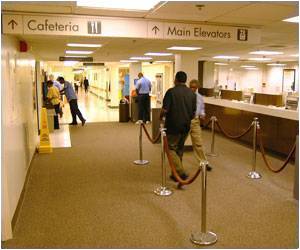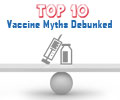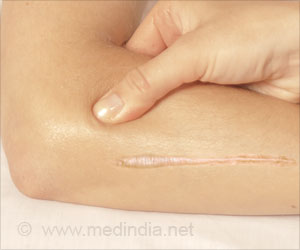A vaccine to prevent life-threatening methicillin-resistant staphylococcus aureus (MRSA) infections following bone and joint surgery is being developed by orthopaedic scientists.

The Orthopaedic Research Society invited URMC researchers to present their findings on Jan. 16, 2011, at the ORS annual meeting in Long Beach, Calif. The team is led by Edward M. Schwarz, Ph.D., professor of Orthopaedics and associate director of the URMC Center for Musculoskeletal Research. John Varrone, a second-year graduate student in Schwarz's lab, will discuss the data at ORS and the ongoing search for attractive molecular candidates for use in a vaccine.
Staph infection is the leading cause of osteomyelitis, a serious bacterial infection of the bone. Up to half of these infections are due to MRSA, a particular strain of staph known as a "superbug" because of its antibiotic resistance. MRSA causes nearly 500,000 hospitalizations and 19,000 deaths a year in the United States. Although improvements in surgical techniques and use of prophylactic antibiotics prevents some MRSA infections, osteomyelitis is expected to remain a serious problem in the future as people live longer and request more joint replacements and reconstructive surgery.
Management of MRSA infections due to bone and joint surgery is very challenging, Schwarz said, and therefore a vaccine to prevent the infection is badly needed.
It is difficult to pin down the source of most post-surgical MRSA infections, but the health and financial consequences are severe. Hospital stays can last up to six months. Standard treatment includes removing the MRSA-colonized prosthetic joint replacement, then an extensive washing and draining of the infected area in an attempt to clear out all bacteria before it seeds in nearby tissue and bone. Antibiotic spacers are usually placed near the joint for six to eight weeks.
A second joint replacement is an option only if the antibiotic-spacer treatment is successful and the health of the patient remains stable. However, the re-infection rate is very high (40 to 50 percent) and remains a risk for months or even years after the initial assault. In some cases the patient never fully regains the use of the infected joint, said Regis O'Keefe, chief of Orthopaedics at URMC and an expert in the treatment of MRSA.
Advertisement
Breaking the ZipperSchwarz, Varrone, and colleagues hypothesized that the best way to attack staph aureus was to target the glucosaminidase (Gmd) protein contained in the deadly bug. Gmd is known to act as a zipper on the bacteria, opening the impenetrable armor (cell wall) during cell division. In the absence of Gmd, staph aureus cannot replicate efficiently, dramatically reducing its ability to cause infections. Thus, if they could find an agent that inhibits bacterial growth and prevents the cell wall from closing during binary fission, Schwarz reasoned, perhaps the bacteria itself could be destroyed.
Advertisement
Second, researchers demonstrated that when mice were infused with the anti-Gmd antibody, and then exposed to MRSA, only about half of the mice developed the infection. As expected, Schwarz said, protection was dependent upon vaccine dose, with the lowest dose offering the least amount of protection.
"A vaccine in humans would probably not be a foolproof approach to preventing infection 100 percent of the time," Schwarz said. "However, even if we could reduce the risk of MRSA by 35 percent, that would be an enormous improvement in the field."
Researchers are seeking anti-Gmd agents with the best properties for binding to Gmd and making the bacteria less viable. This work is being led by scientists at Codevax LLC, a company started by the University of Rochester and private venture capitalists to co-develop and promote unlicensed vaccine technologies for infectious diseases. John Daiss, a scientist at Codevax, is leading the effort to find existing monoclonal antibodies with strong safety profiles – such as those used to develop the cancer drugs Herceptin and Rituxan – so that researcher can move quickly from the bench to initial clinical trials, Schwarz said.
Source-Eurekalert









